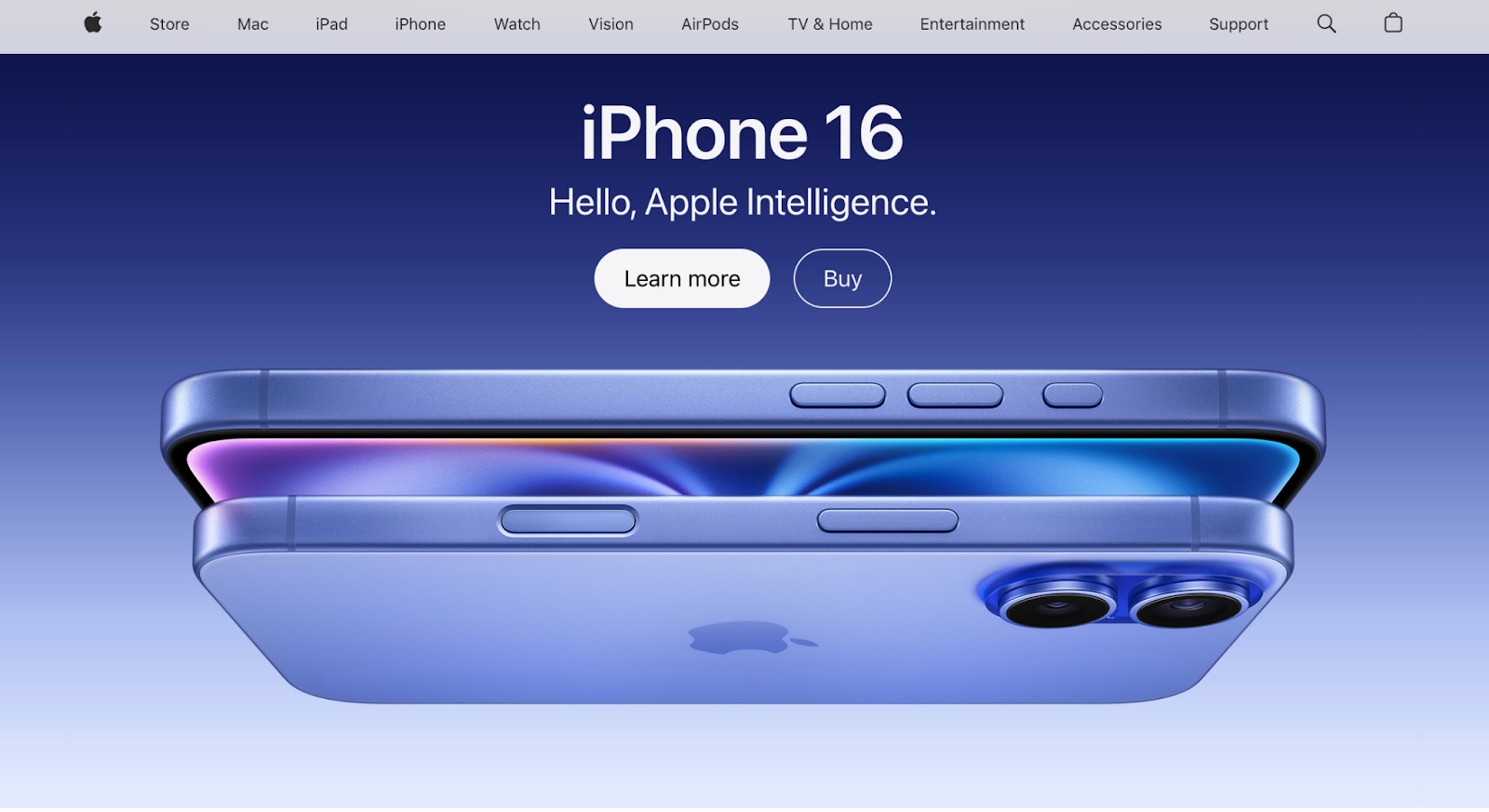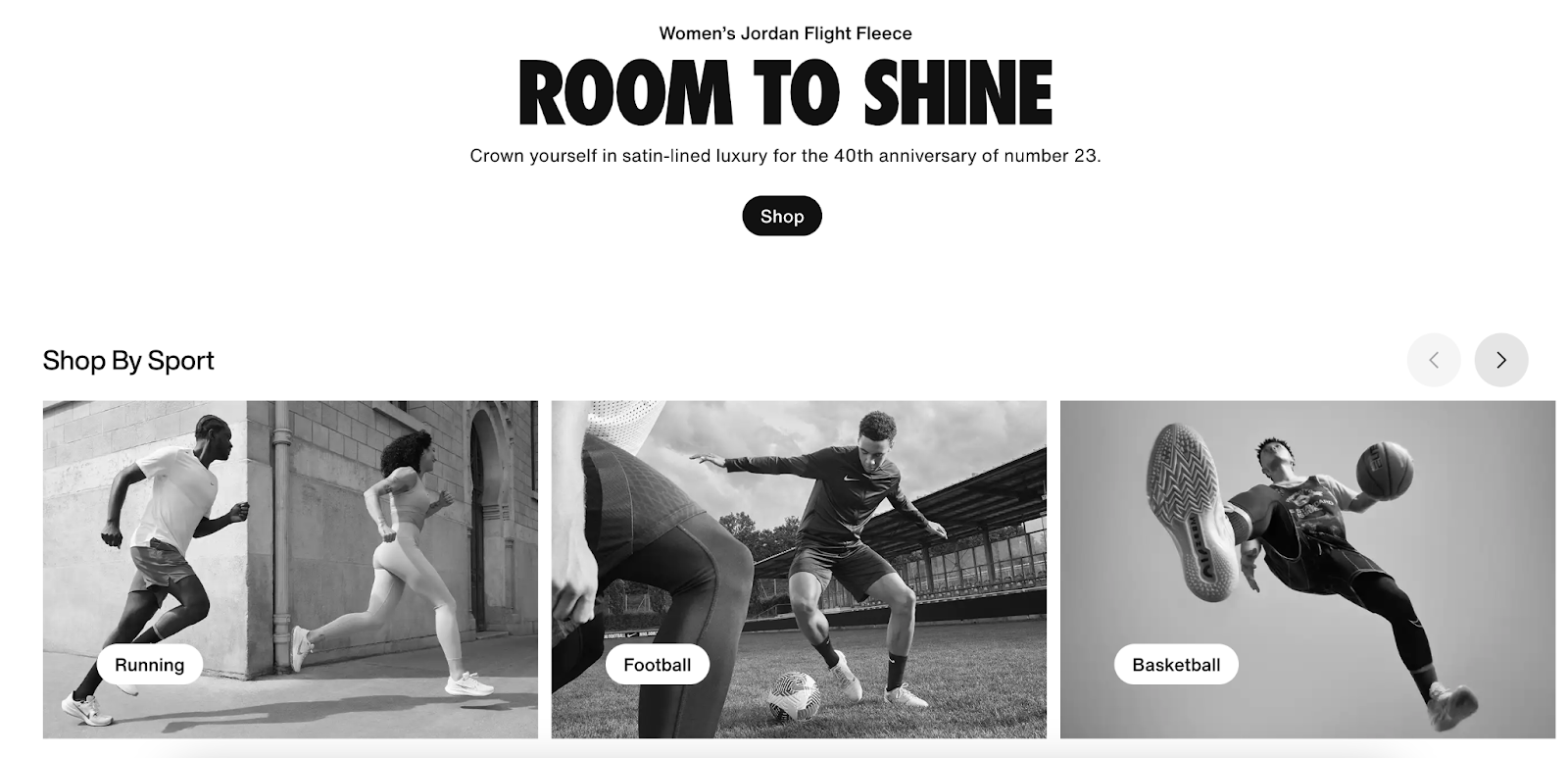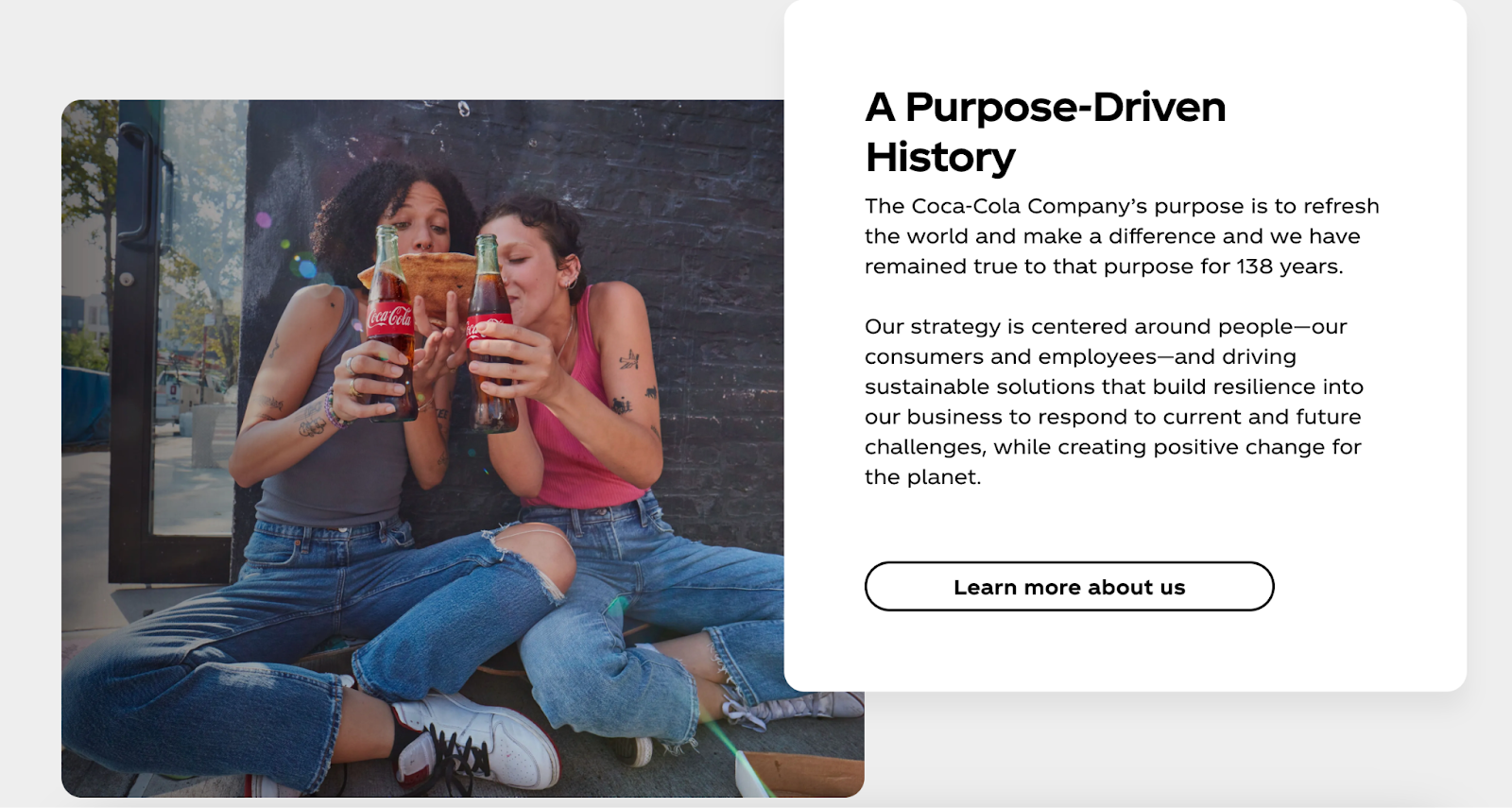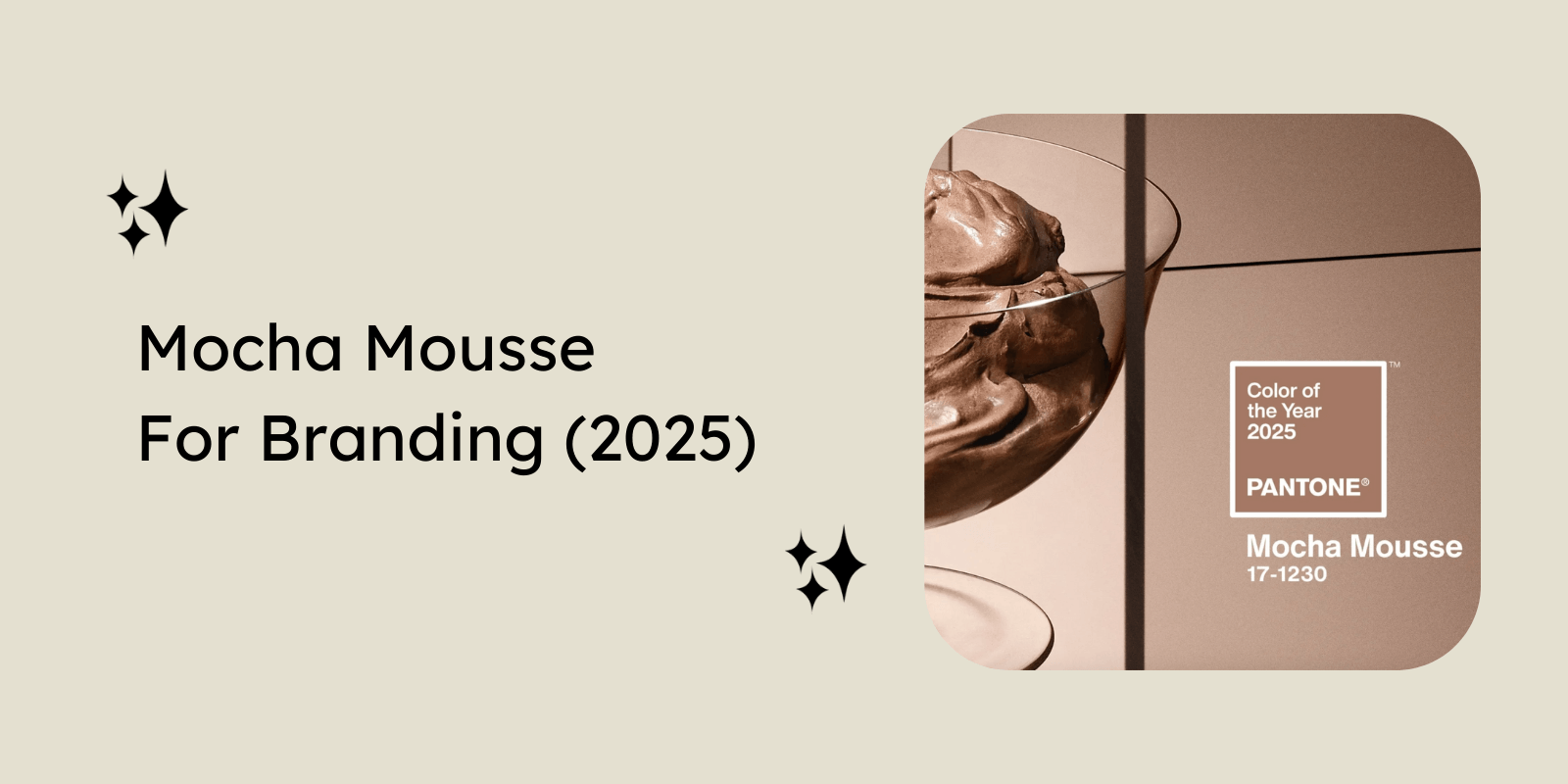Customer churn has reached unprecedented levels across industries, and acquisition costs have increased by over 60% in the past five years. Lower loyalty and higher costs make it harder for businesses to grow sustainably.
However, businesses that execute branding effectively are succeeding by building trust and long-term relationships with their customers.
This guide is your complete resource for mastering branding, addressing these challenges, and supporting growth and loyalty for your business in 2025.
What is a brand?
A brand is a company’s unique identity and story that sets it apart from competitors. Its goal is to create a lasting impression and become the preferred choice for its target audience.
What is branding?
Branding is all about shaping how people see your business. It involves creating elements like your logo, tagline, design style, and even the tone you use to communicate—the elements that make your brand stand out.
It’s what helps people connect your products or services to your business. Whether in a social media post, a billboard, or your product’s packaging, branding ensures your business feels consistent and memorable everywhere.
What is the history of branding?
Branding dates back to 2000 B.C.E. when artisans and traders started marking their goods to show who made them or where they came from. It was about building trust and letting buyers know they were getting quality. Even taverns used symbols and signs to stand out and attract customers.
By the 19th century, branding had become more structured. Western ranchers marked their cattle with unique symbols, and businesses began designing distinct labels and packaging to differentiate their products in increasingly competitive markets. Over time, branding evolved into a strategic tool for building recognition, loyalty, and trust.
What are the key components of branding?
Here are five key components of branding you should keep in mind:
1. Brand identity
Brand identity is the foundation of your brand—it’s what people see and recognize instantly. It includes your logo, colors, typography, and design style. These visual and tangible components work together to create a consistent look that helps your audience connect with your brand wherever they encounter it.
2. Brand image
While brand identity is what you create, brand image is how people perceive it. It’s shaped by their experiences with your products, services, and even your marketing. A positive and consistent brand image builds trust and ensures that what your audience thinks of your brand matches what you aim to represent.
3. Brand personality
Just like people, brands have personalities, too. Whether your brand feels fun and approachable or professional and reliable, these traits make it easier for customers to connect with you on an emotional level. A clear personality sets your brand apart and makes it memorable.
4. Brand equity
All these elements combine to build brand equity, which is the value your brand brings beyond your products or services. It’s the result of trust, loyalty, and positive experiences. Strong brand equity means customers are likely to choose you, even if alternatives are cheaper.
5. Brand voice and tone
Finally, brand voice and tone tie everything together by defining how you communicate with your audience. Your voice reflects your brand’s personality, whether playful or professional; a clear voice and tone ensure your message connects with the right audience every time.
What are the different types of branding?
Branding takes many forms, each serving unique purposes. Here are the most common types:
1. Corporate branding
Corporate branding shows a company’s identity, values, and purpose. It’s how a business communicates its mission and builds a consistent reputation. This approach creates a strong, stand-out personality, helping the company connect with its audience and differentiate itself from competitors.
2. Personal branding
Personal branding is about building a unique identity around an individual. It involves presenting consistent values, communication, and style to gain influence and authority. This type of branding helps individuals connect with their audience and carve out a distinct space for themselves.
3. Product branding
Product branding gives a specific product its personality. By creating a unique name, design, and message specific to its target market, this approach ensures the product grabs attention and stays memorable to consumers.
4. Service branding
Service branding focuses on delivering a memorable experience. It builds trust and emotional connections by ensuring consistency in customer interactions, tone, and quality. This type of branding turns excellent service into a lasting impression.
5. Digital branding
Digital branding is all about creating a strong online presence. From websites to social media and digital ads, it ensures your brand feels cohesive and engaging across platforms, making it easier to connect with and grow your audience.
What is the importance of branding?
Branding isn’t just about having a logo or catchy slogan—it’s about shaping how people see your business. A strong brand builds trust, loyalty, and emotional connections, helping your business grow in the long run.
1. Differentiation in a competitive market
In crowded markets, branding helps you stand out. It shows customers what makes you unique and why they should choose you. For example, in the fast-food world, Chipotle positions itself as a healthier, fresher alternative, setting itself apart from competitors like Taco Bell or McDonald’s.
2. Builds trust and credibility
A consistent, professional brand fosters trust. People are more likely to buy from a business they feel is reliable and familiar. Take McDonald’s—you know what to expect wherever you go. This consistency builds credibility, keeping customers coming back.
3. Creates emotional connections
Great branding makes people feel something. It’s not just about products but about the stories and values behind them. Dove, for instance, connects with its audience by promoting self-confidence and redefining beauty standards, creating an emotional bond that resonates deeply.
4. Enhances customer loyalty
A strong brand keeps customers coming back. People who connect with your brand’s identity and values stick with you over time. Apple is a prime example—its loyal fanbase keeps upgrading, not just for the products but for the entire experience the brand delivers.
5. Supports marketing and advertising efforts
Branding gives your marketing a clear direction. A recognizable identity ensures your campaigns are instantly linked to your business. Think about Nike—its swoosh logo and “Just Do It” slogan make every ad unmistakably theirs, amplifying their message globally.
6. Increases business value
A powerful brand adds value beyond your products. Investors and customers see it as a mark of trust and quality. Tesla, for instance, isn’t just about cars; it’s a symbol of innovation and sustainability, increasing its overall value significantly.
7. Facilitates customer recognition
Good branding makes your business memorable. When people see your logo or colors, they instantly think of you. Coca-Cola’s red branding and bottle design are so iconic that you can recognize them without seeing the name.
8. Drives employee motivation and alignment
Strong branding isn’t just for customers; it inspires employees, too. It gives them a purpose and pride in their work. Google, for example, is known for its innovative and inclusive culture, motivating employees to align with its mission of making information accessible to everyone.
9. Helps launch new products successfully
When you’ve built trust in your brand, it’s easier to introduce new products. Customers already believe in you. Samsung, for example, uses its reputation for quality to launch new devices year after year successfully.
10. Encourages long-term business growth
A solid brand sets the foundation for sustainable growth. It builds loyalty and keeps you relevant in the market. Amazon has grown from selling books to dominating e-commerce thanks to its focus on customer trust and satisfaction.
What are the key elements of a successful brand?
Here are the essential components that contribute to a successful brand:
1. Customer experience
A great brand experience goes beyond selling a product—it’s about how customers feel at every interaction. Every detail, from shopping to after-sales support, plays a role in building loyalty. Birkenstock, for example, focuses on ensuring an excellent fit through detailed size guides, educational content about foot health, and high-quality customer service. This thoughtful approach reinforces trust and keeps customers coming back.
2. Visual identity
Visual identity is the face of your brand—it’s what people see and remember. It includes your logo, color palette, fonts, and overall design style, all working together to create a consistent and recognisable image. For example, Spotify’s green logo and clean, modern visuals reflect its tech-forward and user-friendly approach, making it instantly recognisable across platforms.
3. Brand messaging
Brand messaging is how you communicate your brand’s purpose, values, and personality to your audience. It includes your voice, tone, taglines, and the story you tell. For instance, The Body Shop focuses its messaging on sustainability and cruelty-free practices, creating a strong connection with ethically-minded customers who align with these values.
4. Emotional connection
Maggi has mastered emotional branding by tapping into nostalgia and comfort. For many, it’s more than a quick meal—it’s a reminder of childhood, late-night snacks, or moments shared with family and friends. Campaigns like “2-Minute Noodles” or “Meri Maggi” evoke familiarity and warmth, building a strong emotional bond that keeps customers loyal, even through challenges or competition.
How to measure the success of your branding
Measuring the success of your branding efforts is essential to understanding how effectively your brand connects with your audience. Here are three key metrics to track:
1. Brand awareness
Brand awareness gauges how familiar people are with your brand. It’s about whether your target audience recognises your name, logo, or products and how top-of-mind you are when they need something you offer.
How to measure it:
You can use surveys to ask people if they’ve heard of your brand or recall your advertising. Monitoring website traffic, social media mentions, and search trends can also provide insights into your brand’s visibility.
2. Brand loyalty
Brand loyalty reflects customers’ likelihood to continue buying from you rather than switching to a competitor. Loyal customers make repeat purchases and often become brand advocates, promoting your business through word-of-mouth.
How to measure it:
Track metrics like repeat purchase rates, customer retention, and purchase frequency. Loyalty program participation and customer feedback can also offer clues about loyalty levels.
3. Net promoter score (NPS)
Net Promoter Score is a popular metric for assessing customer satisfaction and loyalty. It asks a simple question: “On a scale of 0 to 10, how likely are you to recommend our brand to a friend or colleague?”
How to measure it:
Subtract the percentage of detractors from the percentage of promoters. An NPS above 0 is generally considered good, but top brands aim for 50 or higher.
Case studies of successful branding
Let’s look at some iconic global brands and emerging DTC players, focusing on what makes their branding stand out.
Iconic global brands
Brands that have shaped industries and remain globally recognised for their consistent and innovative branding.
1. Apple
Apple’s branding is synonymous with simplicity, innovation, and premium quality. The brand uses minimalist design, from product packaging to advertisements, creating a clean and futuristic image. Its “Think Different” campaign and its ecosystem brings deep loyalty among its customers.

2. Nike
Nike’s branding is a masterclass in using athletic excellence and human achievement. Nike connects its products with stories of success and perseverance by aligning with legendary athletes like Michael Jordan, Serena Williams, and Cristiano Ronaldo. These athlete partnerships establish Nike’s image as a brand for champions, creating a lifestyle associated with performance, ambition, and breaking barriers.

3. Coca-Cola
Coca-Cola’s branding focuses on universal emotions like happiness and togetherness. Over the decades, its consistent use of the red-and-white color palette and the classic logo reinforces recognition. Campaigns like “Share a Coke” add a personal touch, turning an everyday product into a symbol of connection and joy.

Emerging DTC brands
Brands that are changing industries with bold, customer-focused, and modern branding.
1. Glossier
Glossier redefined beauty branding by making it about real people and real skin. What started as a blog, Into the Gloss, became a relatable, customer-centric brand. Its minimalist packaging and skincare-first approach resonate with its audience, while social media engagement makes customers feel like an integral part of the brand’s journey.

2. Allbirds
Allbirds disrupted the footwear market by focusing on eco-conscious branding and transparency. Its marketing highlights natural materials like wool and eucalyptus while communicating its environmental impact. By emphasising comfort and sustainability through storytelling and social media campaigns, Allbirds built trust and positioned itself as a leader in sustainable fashion.

3. Warby Parker
Warby Parker disrupted eyewear with a direct-to-consumer model that prioritised affordability and style. Its branding focuses on experiences, from its at-home try-on program to its clean, modern designs. The approachable tone and witty messaging make Warby Parker feel accessible, refreshing, and customer-focused, setting a new standard for eyewear.

The future of branding
Here’s how the future is shaping up:
1. AI and automation in branding
AI is simplifying branding like never before. Tools such as Canva and Adobe Sensei help create logos, social media content, and ad campaigns quickly and efficiently.
AI also helps brands better understand customers by analysing data to offer relevant content and experiences. For instance, Netflix uses AI to recommend shows based on individual viewing habits, seamlessly meeting customer needs.
2. Immersive experiences with AR/VR
AR and VR are changing how customers interact with brands. AR tools like IKEA Place allow users to see how products fit into their spaces, making decisions easier.
As seen in Gucci’s metaverse initiatives, VR takes things further with virtual stores and product trials. These tools make brand experiences interactive and exciting, creating stronger engagement.
3. Purpose-driven and sustainable branding
Customers increasingly prefer brands that reflect their values. According to Nielsen, 73% of consumers are willing to change their habits to reduce environmental impact.
Brands like Patagonia focus on sustainability by using recycled materials and supporting eco-friendly initiatives. This type of branding approach builds trust and loyalty by showing customers that the brand cares about more than profits.
4. Hyper-personalized branding
Personalisation has become a must. Spotify leads the way by offering playlists customised to individual listening habits, making users feel understood.
Similarly, skincare brands like Curology create products based on individual needs. As 80% of customers prefer brands that offer personalised experiences, this approach has become essential for staying competitive.
5. Decentralized and community-driven branding
Brands are giving their customers more power. LEGO allows fans to suggest and vote on new product ideas, making them active participants in the brand.
Blockchain technology also adds transparency. NFTs can be used for loyalty programs or exclusive offers. These innovations help brands build trust and stronger relationships with their communities.
6. Cultural relevance and inclusivity
Brands are no longer just observing cultural trends but becoming part of them. By embracing diversity and reflecting real-world stories, brands are building authentic connections.
For example, instead of using generic imagery, modern brands collaborate with local artists or celebrate regional traditions to make their campaigns resonate. It’s not about ticking a box but showing customers they genuinely matter.
7. Increased focus on digital-first branding
Digital-first branding isn’t just about being online—it’s about succeeding there. In a world where customers spend hours scrolling, brands create immersive, multi-platform experiences.
Imagine buying skincare through an interactive Instagram shop and receiving tips from an app. From live-streamed launches to 24/7 social media support, the priority is to be where the audience already is and make every click count.
8. The role of influencers and advocates
Influencers are changing from collaborators to co-creators. Micro-influencers, in particular, are now central to branding strategies as they speak directly to niche, engaged audiences. But it doesn’t stop there.
Customers are also stepping into the spotlight, sharing their stories, and becoming the face of campaigns. For example, a sneaker brand showcasing a runner’s journey rather than a celebrity endorsement feels real, relatable, and impactful.
9. Data-driven decision making
Data is helping branding like never before. It’s not just about knowing what customers want—it’s about predicting their next move.
For instance, a streaming service could switch up its recommendations in real time during a blockbuster release to keep viewers engaged. Data isn’t about numbers; it’s about creating authentic connections.
10. Integration with emerging technologies
The future is tech-first, and branding is riding the wave. Web3 allows bracelet brands with customers on decentralised platforms, offering NFT-based loyalty programs or exclusive digital perks.
Voice branding is also gaining traction as more people use intelligent assistants. Imagine a brand’s identity reflected in visuals and how it “sounds” when answering your questions—every touchpoint now has personality.
11. Evolving customer expectations
Customers no longer want products; they want experiences. This is leading brands to think beyond the sale. From interactive packaging to online-to-store experiences, it’s about delivering something memorable at every step.
Small touches, like a handwritten thank-you note in an online order, can make all the difference. It’s not just about meeting expectations—it’s about exceeding them now.
Common mistakes in branding
Here are some common pitfalls brands should avoid:
1. Inconsistent visual identity and messaging
When your brand looks or sounds different across platforms, it creates confusion. Customers need to see consistency to build trust and recognition.
2. Lack of clear brand positioning
If your brand doesn’t stand for something, it risks being lost in the crowd. Precise positioning tells customers why you’re different and why you matter. Without it, your brand becomes forgettable amidst the competition.
3. Ignoring target audience needs
Failing to consider your audience leads to disconnects. If you’re not addressing their pain points or aspirations, they’ll look elsewhere. Branding should always reflect what matters to your target customers.
4. Overcomplicating the brand message
A cluttered or overly technical message pushes people away. Simplicity is key—your audience should understand your brand’s value in seconds. The best messages are clear and leave no room for confusion.
5. Failure to deliver on brand promises
Broken promises damage credibility. If you claim fast delivery or top-notch quality but fail to deliver, customers won’t return. Consistency between what you say and what you do is crucial.
6. Neglecting customer feedback
Your customers often know what’s working and what’s not. Ignoring their feedback means missing out on valuable insights. Engaging with their suggestions helps improve both branding and customer relationships.
7. Underestimating the importance of brand storytelling
Without a compelling story, your brand becomes just another name. Storytelling creates emotional connections, making your brand relatable and memorable. Customers care about why you exist, not just what you sell.
8. Not adapting to market changes
Markets evolve, and so should your brand. Sticking to old strategies while customer expectations shift can make your brand feel outdated. Embracing change shows flexibility and keeps you relevant.
9. Overlooking employee alignment with branding
Your employees represent your brand in every interaction. It creates inconsistencies customers can spot if they don’t embody its values. Internal alignment ensures your brand feels authentic at every level.
10. Focusing solely on logo and aesthetics
A logo is only one part of branding. Customers also value the experience, tone, and promises behind the visuals. A pretty design might catch attention, but the substance keeps customers loyal.
11. Skipping market research
Branding without research is like shooting in the dark. Understanding your audience and competition through research ensures your branding resonates and positions you effectively.
12. Failing to monitor and measure branding efforts
If you’re not tracking your branding’s impact, you’re flying blind. Metrics like brand awareness and customer loyalty provide a roadmap for what’s working and what needs improvement.
How to get started with branding
Building a brand might feel overwhelming, but starting with the proper steps makes it easier. Here’s how you can set the foundation:
1. Understand what branding Is
Branding isn’t just about a logo—it’s how people perceive your business. Your visuals, messaging, and customer experience make your business memorable and trustworthy.
2. Define your business’s mission and vision
Your mission explains your business’s existence, and your vision describes its direction. These guide everything you do and ensure your branding aligns with your goals and values.
3. Identify your target audience
Who are you trying to reach? Understanding your audience’s needs, preferences, and problems helps shape a brand that connects with them.
4. Conduct market and competitor research
Look at what others in your industry are doing. This isn’t about copying—it’s about identifying gaps and opportunities to position your brand uniquely.
5. Determine your unique value proposition
What makes your business different? Your UVP highlights the value you offer that no one else does, making it clear why customers should choose you.
6. Choose a memorable business name
Your name should be easy to remember, relevant to your business, and unique enough to stand out. It’s often the first thing people associate with your brand, so make it count.
7. Create a logo and visual identity
Your logo and design elements are your brand’s “face.” They should be simple, adaptable, and visually consistent across platforms to make a lasting impression.
8. Establish brand colors and typography
Colours and fonts evoke emotions and reinforce your identity. Choose a palette and typography that reflect your brand’s personality and stick with them everywhere.
9. Develop your brand voice and tone
How you speak to your audience matters. Whether your tone is friendly or formal, consistency in voice helps build trust and familiarity with your brand.
10. Write a compelling brand story
Your brand story is what connects you emotionally with your audience. Share why your business started, your challenges, and how your values shape your journey. A good story builds trust and relatability.
11. Set clear branding goals and objectives
Define what you want to achieve with your branding—whether it’s increased recognition, customer loyalty, or entering new markets. Clear goals keep your branding efforts focused and measurable.
12. Design a brand style guide
A style guide ensures your visuals, tone, and messaging stay consistent across all platforms. It’s like a rulebook for your brand, helping everyone on your team stay aligned.
13. Create a consistent online presence
Your audience is likely to find you online first. Ensure your website, social media, and online listings reflect your brand identity and deliver a seamless experience.
14. Start building your website and social media profiles
Your website and social profiles are your digital storefronts. Make them user-friendly, visually appealing, and aligned with your brand values. Add engaging content to keep your audience interested.
15. Launch your brand with a marketing plan
Create a strategy to introduce your brand to the world. Whether through ads, social media campaigns, or collaborations, a strong launch sets the tone for your brand’s growth.
16. Gather feedback from your target audience
Once your brand is live, listen to what your audience has to say. Feedback helps you identify what’s working and where you can improve to meet their expectations better.
17. Refine and adapt your branding efforts over time
Branding isn’t a one-time task. As trends and customer preferences evolve, so should your branding. Stay flexible and open to making changes that keep your brand relevant.
18. Ensure consistency across all channels and touchpoints
Every interaction your audience has with your brand should feel the same, whether on your website, in-store, or through social media. Consistency builds trust and recognition over time.
Conclusion
Branding involves many moving parts and strategic elements. What’s essential is to ensure that each of these moving parts is working together to push the brand forward.
Poorly managed branding can lead to inconsistent perception, confusing your audience with every new campaign. That’s why it’s crucial to approach branding thoughtfully and collaborate with experts who can seamlessly align everything.
Ready to build a brand that genuinely connects and lasts?
Let’s discuss how we can help you bring your vision to life.




